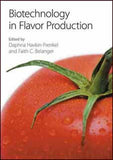Preface.
Acknowledgments.
About the Author.
Part I. General.
Chapter 1. Analytical Matters.
Chapter 2. Flavors.
Chapter 3. Spices.
Chapter 4. Essential Oils.
Chapter 5. Food Colors.
Chapter 6. Preparation of Plant Material for Extraction.
Chapter 7. Methods of Extraction of Essential Oils.
Chapter 8. Solvent Extraction.
Chapter 9. Supercritical Fluid Extraction.
Chapter 10. Homogenization of Extracts.
Chapter 11. Suspension in Solids.
Chapter 12. Deterioration During Storage and Processing.
Part II. Individual Flavors and Colorants.
Chapter 13. Ajwain (Bishop’s Weed).
Chapter 14. Allspice (Pimenta).
Chapter 15. Anka-Red Fungus.
Chapter 16. Aniseed.
Chapter 17. Annatto.
Chapter 18. Asafoetida.
Chapter 19. Basil.
Chapter 20. Bay Leaf (Laurel).
Chapter 21. Beet Root.
Chapter 22. Bergamot Mint.
Chapter 23. Black Cumin.
Chapter 24. Black Pepper.
Chapter 25. Capsicum.
Chapter 26. Caramel.
Chapter 27. Caraway.
Chapter 28. Cardamom.
Chapter 29. Carob Pod.
Chapter 30. Carrot.
Chapter 31. Cassia.
Chapter 32. Celery Seed.
Chapter 33. Chicory.
Chapter 34. Cinnamon.
Chapter 35. Cinnamon Leaf.
Chapter 36. Clove.
Chapter 37. Clove Leaf.
Chapter 38. Coca Leaf.
Chapter 39. Cochineal.
Chapter 40. Cocoa.
Chapter 41. Coffee.
Chapter 42. Coriander.
Chapter 43. Coriander Leaf.
Chapter 44. Cumin.
Chapter 45. Curry Leaf.
Chapter 46. Date.
Chapter 47. Davana.
Chapter 48. Dill.
Chapter 49. Fennel.
Chapter 50. Fenugreek.
Chapter 51. Galangal: Greater.
Chapter 52. Galangal: Kaempferia.
Chapter 53. Galangal: Lesser.
Chapter 54. Garcinia Fruit.
Chapter 55. Garlic.
Chapter 56. Ginger.
Chapter 57. Grape.
Chapter 58. Grapefruit.
Chapter 59. Green Leaves.
Chapter 60. Hops.
Chapter 61. Hyssop.
Chapter 62. Japanese Mint.
Chapter 63. Juniper Berry.
Chapter 64. Kokam.
Chapter 65. Kola Nut.
Chapter 66. Large Cardamom.
Chapter 67. Lemon.
Chapter 68. Lemongrass.
Chapter 69. Licorice.
Chapter 70. Lime.
Chapter 71. Long Pepper.
Chapter 72. Lovage.
Chapter 73. Mace.
Chapter 74. Mandarin.
Chapter 75. Marigold.
Chapter 76. Marjoram.
Chapter 77. Mustard.
Chapter 78. Nutmeg.
Chapter 79. Onion.
Chapter 80. Orange.
Chapter 81. Oregano.
Chapter 82. Paprika.
Chapter 83. Parsley.
Chapter 84. Peppermint.
Chapter 85. Red Sandalwood.
Chapter 86. Rosemary.
Chapter 87. Saffron.
Chapter 88. Sage.
Chapter 89. Savory (Sweet Summer).
Chapter 90. Spearmint.
Chapter 91. Star Anise.
Chapter 92. Sweet Flag (Calamus).
Chapter 93. Tamarind.
Chapter 94. Tarragon.
Chapter 95. Tea.
Chapter 96. Thyme.
Chapter 97. Tomato.
Chapter 98. Turmeric.
Chapter 99. Vanilla.
Part III. Future Needs.
Chapter 100. Opportunities in Natural Flavors.
Chapter 101. Opportunities in Natural Colorants.
Index of Systematic Biological Names.
Subject Index.
Dr Mathew Attokaran (formerly Dr A.G. Mathew), has carried out research in food science and technology for over 28 years in the Central Food Technology Research Institute, Mysore and the Regional Research Laboratory (CSIR), Trivandrum, India, before moving to industry. He was the President of the Essential Oils Association of India for two terms and is now Technical Director of Plant Lipids Limited, Kolenchery, India.


















